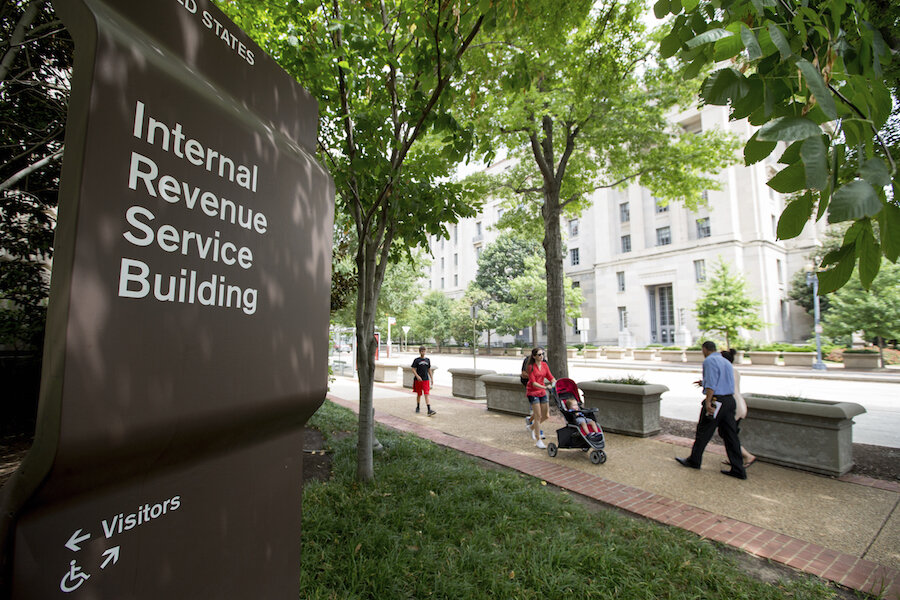Tax Day: Seven alternative ways to pay your taxes
Loading...
Sending a pile of hard-earned money to the IRS in April is probably one of the least pleasurable financial experiences in the universe, but lots of people do it every year.|
For many, the payment comes in the form of a paper check made out to the U.S. Treasury or a withdrawal directly from their bank account.
But those aren’t the only ways to pay The Tax Man.
For cash-only types
1. 7-Eleven
Thanks to a partnership announced last year between the IRS, 7-Eleven and the cash-payments service PayNearMe, you can pay your taxes in greenbacks at your local convenience store — and get a Slurpee to boot.
Pros: You don’t need a bank account or a credit card. Instead, you enter your information online, get a payment code via email and take that code (with your cash) to a participating 7-Eleven, which will take your money and give you a receipt.
Cons: There’s a $3.99 fee per payment, and you can’t pay more than $1,000 per day. Also, it can take a couple of days for your payment to post, so don’t wait until the last minute. Not all 7-Elevens do this; find participating stores here.
2. IRS Taxpayer Assistance Centers
It might be less convenient than going to the corner store, but you can pay your tax bill in cash at most IRS Taxpayer Assistance Centers.
Pros: This is also where you can go to get other kinds of tax help.
Cons: You’ll need an appointment, a photo ID and a Social Security number or Taxpayer Identification Number to get in the door. And don’t ask if they can break a $20 — the IRS wants exact change.
» MORE: Try our tax calculator
For money shufflers
3. Plastic
Credit cards can be a tantalizing payment method at tax time because they offer the ability to pay over time (in effect) or earn rewards.
Pros: Credit cards are convenient. Plus, “lots of clients want the miles,” says Melinda Nelson, a CPA and partner at Henry+Horne in Tempe, Arizona.
Cons: Paying with a credit card doesn’t usually make financial sense, Nelson warns. Running up a balance and accruing interest charges can be dangerous, for one thing. There’s also a fee to pay with plastic. Expect to shell out around 2% to pay with credit, maybe more if you’re doing it through tax software.
Debit card payments have a fee, too: They can cost around $2 to $4, depending on the size of the payment. And note that paying with a debit card and having the IRS take money straight out your bank account are two different processes — the first one comes with a fee; the second one, called Direct Pay, doesn’t. You also can use a digital wallet, but you won’t avoid the debit or credit card fee.
4. Wire transfer
If you’ve got to pay the IRS right away or want to pay from a foreign account, this might work for you.
Pros: You can use a bank or nonbank provider such as Western Union to get the money there. Domestic transfers usually are processed in a few hours; international ones can take days.
Cons: Wire transfers can be expensive. The entity wiring the money for you might charge around $25 if the account is in the U.S.; foreign accounts typically cost more, and the exchange rates might be so-so. Though secure, a wire can’t be canceled once it’s sent, so if you go this route be sure to follow the IRS’ wire instructions perfectly.
For people on the go
5. IRS2Go
This is the IRS’ mobile app. You can use it to track your refund, find free tax help or make a payment directly from your bank account or with plastic.
Pros: Paying via an app on your phone could be a time-saver and free you from the shackles of a computer.
Cons: The IRS still has to verify your identity and find out how you want your payment applied, so it’s going to take more than a few taps.
6. Phone it in
The IRS’ payment processors have toll-free numbers that accept payments.
Pros: If you want to pay with a credit or debit card but aren’t crazy about entering your card information online, you can pay via phone.
Cons: You’ll still need to cough up your credit or debit card information and the processing fee for paying with plastic, plus you may be asked for a Social Security number or other identifying information.
For planners
7. The Electronic Federal Tax Payment System
If you want to schedule a payment in advance, check out this free service from the U.S. Department of the Treasury.
Pros: You can set up payments from a bank account as much as a year ahead on its website. You can change or cancel scheduled payments two business days in advance, too.
Cons: It takes a week or so to enroll and have the IRS validate your information. Once you’re in, you have to schedule your payment by at least 8 p.m. ET on the night before the due date.
Tina Orem is a staff writer at NerdWallet, a personal finance website. Email: torem@nerdwallet.com.
The article 7 Alternative Ways to Pay Your Taxes originally appeared on NerdWallet.







